Often there is a situation when the builder can not understand why the concrete cracked after pouring. This is a fairly common phenomenon, which leads to a deterioration in the performance characteristics of the material and its gradual destruction. We want to talk about the reasons for the occurrence of cracks and ways to prevent this phenomenon.
The appearance of cracks - a frequent phenomenon when working with concrete.
Cracks in concrete

Cracking of concrete structures leads to a decrease in their quality.
Concrete cracking is a widespread phenomenon that occurs for a variety of reasons, and for the convenience of considering this topic, it is necessary to classify individual cases of manifestation of this phenomenon.
So, all the cracks can be divided into three large groups:
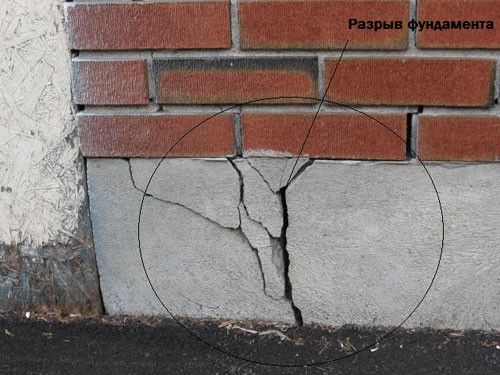
In the photo - a typical example of a structural crack.
The damage to the first group includes integrity violations caused by increased loads on the parts, mismatch of the strength of the material with real loads, architect's mistakes in the design, mistakes in the design of the mixture, soil movements, natural disasters, blows, explosions, etc.
Important!
Often there is a cracking due to errors in the preparation of concrete with their own hands.
The price of ready-mixed concrete hits the budget, but the repair of a poor-quality foundation is much more expensive.
Structural defects are characterized by a high opening width, great depth, through nature, long length and special localization. Prevention of such damage is associated with competent design and calculation of loads, the use of high-quality materials, taking into account the features of geology and refers, mainly, to technical and project preparation for construction.
To take into account the impact of natural disasters and accidents, technogenic catastrophes and wars is almost impossible, the same applies to violations due to fires.
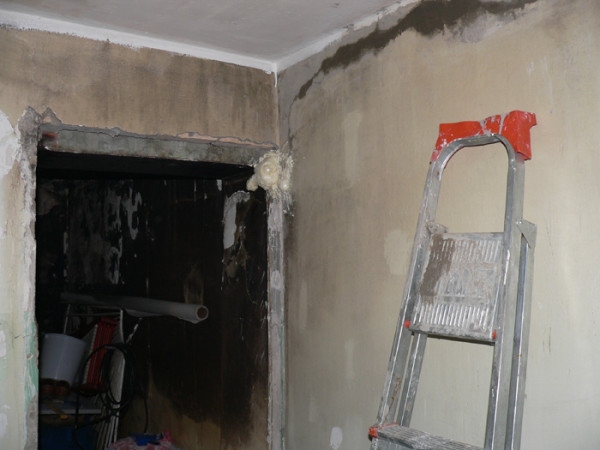
After fires, cracking of concrete is almost always observed.
The second group of defects refers to the structure and integrity of the material as a result of the natural physical and chemical processes taking place in the concrete at all stages of its maturation, especially at the initial stages.
Here there is a whole spectrum of phenomena leading to the appearance of such defects:
- Cracks from plastic shrinkage. Occur due to intensive evaporation of moisture from the surface and as a result of uneven shrinkage and compaction of the mass;
- Thermal shrinkage failure. Appear because of the effect of temperature expansion-compression of materials caused by heating and uneven cooling of the mixture;
- Shrinkage defects when the solution dries out. Occur due to uneven reduction in the volume of concrete during drying;
- Cracks due to corrosion of reinforcement. With active rusting, steel increases in volume and can break concrete.
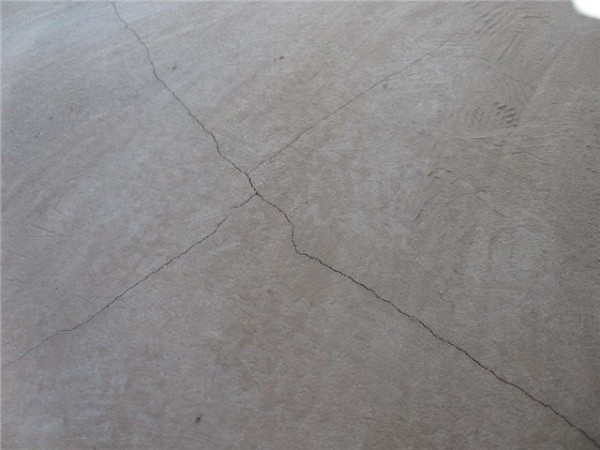
Example of shrinkage damage.
Important!
Preventing the appearance of cracks is a much more efficient and rational way than eliminating and repairing them.
For successful prevention, you should know the causes of the defects.
Causes
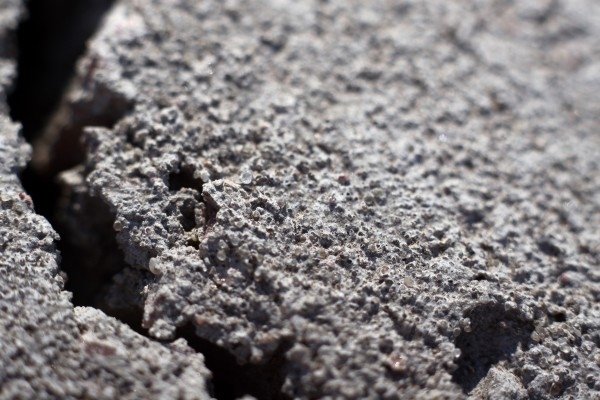
Most damage occurs due to natural causes.
If everything is clear with the causes of the appearance of structural defects, then structural violations should be considered in more detail. So, let's start in order.
Plastic shrinkage is a process that takes place at the very beginning of a solution's life. There is an effect such as intensive evaporation of moisture from the exposed surface of the laid concrete. As a result, the mass of the solution actively decreases in volume, while the lower layers remain in the same size, and the upper layer is covered by a network of thin hair cracks.

Plastic shrinkage and evaporation of moisture lead to hairy fissures.
Also during the first period of life of the mortar during laying, the process of shrinkage and compacting of the concrete mixture under the action of gravity begins. If there is insufficient compaction with the vibration tool, a moment arises when the concrete has already seized, and its compaction continues. This leads to faults.
Temperature-shrinkage deformations appear due to the hydration reaction of cement, flowing with the release of heat. The solution heats up, increasing in volume, while the hardening areas crack. Also, the reverse process is affected - the top layer cools and decreases, while the lower one remains in the same size or increases, the result is the discontinuities of the material.
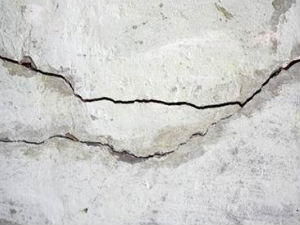
Temperature-shrinkage damage.
Shrinkage cracks during drying are caused by the fact that the grasped material decreases in volume. This is typical for any type of concrete, glue and other hardening and drying substances. Usually observed in non-reinforced structures and products of a flat, extended or non-standard shape, so the concrete screed of a large area, plaster and similar structures crack.
Important!
Shrinkage upon drying often leads to aggravation of other types of cracks and an increase in the degree of their opening.
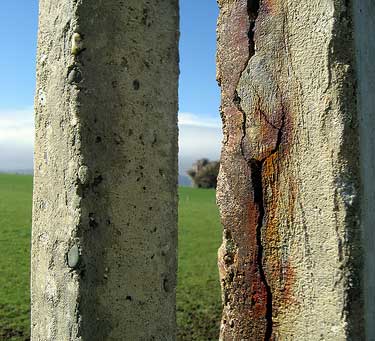
Corrosive rupture of reinforced concrete.
Penetration of moisture inside the concrete structure leads to corrosion of the metal inside it. As a result, reinforcing bars increase in volume and tear the stone.
Prevention
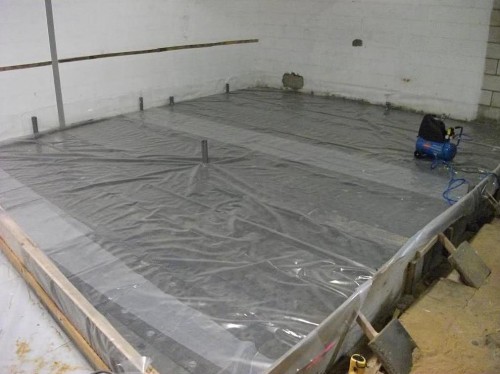
Proper care helps prevent damage.
To avoid the appearance of defects and faults in concrete, it is necessary to follow the rules that contain the instruction for concreting.
For brevity, we give three main points:

Humidification of the surface prevents it from cracking.
Important! Observe the conditions of concreting, namely: work in the correct temperature regime, monitor the humidity, watch for changes in weather conditions, do not break the framework at which you can do the work, do not neglect the technology of care for hardening concrete and use high-quality materials.
For concreting responsible units and structures it is better to use high-quality commercial concrete, as a homemade product most often demonstrates the listed phenomena, and different at the same time.
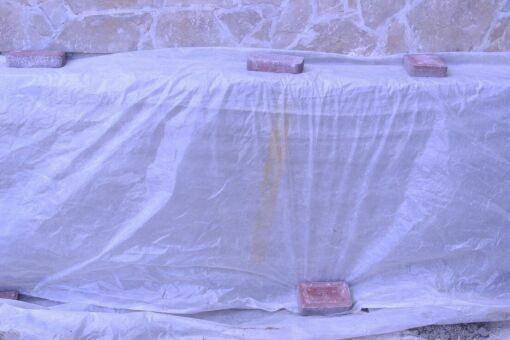
Protect the material from sudden changes in temperature.
Important! Do not dilute concrete with water and do not add cement to it, this is a gross violation of the technology and interference in the formulation of the mixture, the result of which is predictable.
Cracks lead to the fact that further processing and construction procedures lead to an aggravation of the state of the construction, only cutting the reinforced concrete with diamond circles and diamond drilling holes in the concrete does not destroy it. To avoid such defects, it is necessary to strictly follow the technology of concrete work, as detailed in the video in this article.
One of the most common and dangerous defects of a concrete surface is cracking. Cracks in concrete after pouring, during operation or after machining can occur due to the impact of a huge number of factors.
The cause of this defect may be hidden both in the wrong preparation of the solution, and in its transportation, packing or illiterate care.
Causes of surface cracking
Causes of cracks in concrete can be very different.
There is a division of these factors into the following groups:
- Even at the stage of solution preparation, an error in the technology of preparation of building material can be made, for example, the ratio of such components of a solution as water and cement may be disturbed. As a result of such violations, the building material will relate to another brand, and accordingly will not meet the stated requirements;
- Too long a process of transporting concrete mass can lead to the beginning of such a process as "welding" of concrete;
- An error in calculations during the design phase can lead to the fact that the finished monolith will be given an excessively high load already at the stage of operation of the finished product. The cause of cracks in this case may be insufficient reinforcement;
- Difficult operating conditions. So, for example, designers may not take into account the presence on the site for building puchinistyh soils;
- Violation of the technology of working with a mixture on the construction site:
- It is often possible to meet with such a situation, when water is added to the solution, so that it is more convenient to pour and level it. But excess moisture prevents the normal process of recruiting strength;
- Also, cracks in reinforced concrete structures may result from improper laying of steel reinforcement or insufficient compaction of the concrete mass during the pouring process, as well as incorrect installation of the formwork panels;
- Construction of additional extensions to the facility without taking into account the additional load on its surface.
Classification of cracks in concrete

The instruction on elimination of the arisen defects first of all rests on the type of the crack.
There are the following types of similar defects:
- Through. Occurs due to the effect of axial tensile forces or forces with a low level of eccentricity;
- Cracks in the stretched zone. Are the consequence of the bending of the product or are located perpendicular to the bars of the reinforcement;
- Defects arising from shear forces or shear fractures. Such cracks are directed at an angle to the reinforcement bars;
- Cracks located parallel to the reinforcing bars may occur in the anchoring area if it is not properly produced, as a result of soil heaving or in case of uneven draft of the monolithic structure;
- Cracks of small dimensions can occur due to differences in temperature conditions on the surface of the concrete product and its internal layers;
- Hair fractures can also occur as a result of temperature changes, but their depth does not exceed a couple of millimeters.
Methods for repairing a defect
In a freshly applied solution, it is possible to eliminate defects of this kind without special expenses, simply by compacting the mixture again.
Note! Freshly considered is a solution, after pouring which has passed no more than 1-2 hours.
Well, in order to remove cracks in the already frozen structure, you will have to use one of the following methods:
- Method of injection. In the crack under pressure, the repair composition is injected;

Note! Some repair compounds can, in addition to sealing the cracks, also displace water from the formed cavity, but their price will be much higher.
- Termination method, which provides for filling the defect with concrete.
Fracture sealing
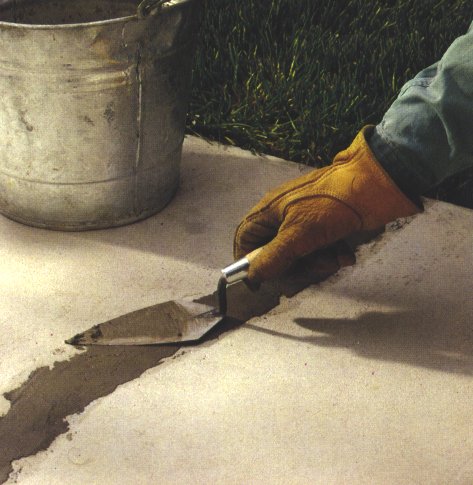
This method is most often used in practice, because each owner can handle it with their own hands without the help of professionals.
Council. As a rule, for its implementation it is necessary not only to fill the void with a solution, but also to pre-treat the surfaces in order to ensure the best adhesion.
In order to self-seal cracks on the surface, you must prepare or purchase the following materials and tools:
- Sander;
- Chisel;
- Putty knife;
- A hammer;
- Brush with hard metal rods;
- A vacuum cleaner;
- Trowel;
- Brush;
- Rake or rule;
- Pure water;
- Cement flour;
- Wire;
- Glue;
- Smoothing iron made of metal.
Now it remains to answer the questions about how to cover the cracks and how to do it correctly?
This task involves the execution of the following stages of repair work:
- Preparatory activities. First, you need to examine the crack itself and identify the weak points around it. Further, using a chisel and a hammer, it should be widened and deepened to a minimum of 5 mm. This is necessary in order to ensure that the repair staff is firmly entrenched in its depth and does not drop out;
Council. If there is a need, you can deepen the crack with the sharp edge of the spatula.
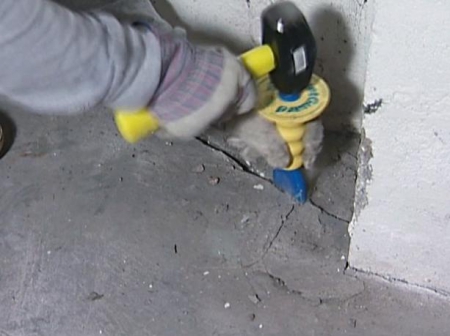
- Now the crack should be thoroughly rinsed, cleaned of the remaining dirt and cement stone particles. To fully dust the surface, you should use a vacuum cleaner. Using a sponge will dry the crack and save it from excessive moisture;
- If in the process of expansion of a crack the reinforcement has been bared, then before starting to work with the solution, it is necessary to treat the metal with primers with anticorrosive action;
- In order to seal the seal, professionals recommend using sand mortar consisting of cement and sand in a ratio of 1 to 3. In such a solution, PVA glue can also be added;
Council. Sufficiently deep defects of the surface should be filled in several layers, necessarily moisturizing each layer to ensure a high-quality filling and uniform drying of the solution.

- In some cases, cracks should be reinforced using small pieces of reinforcing metal wire;
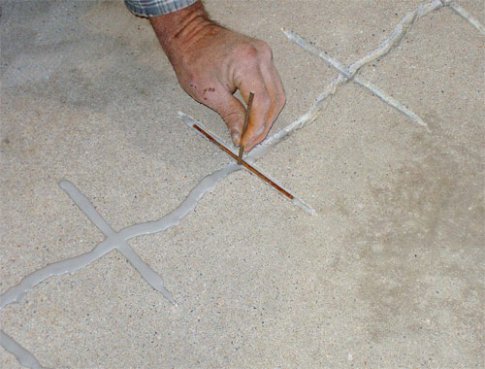
- The surface of the crack, filled with a solution, is neatly leveled with a trowel;
- The remaining protruding parts of the mortar should be sanded using a specialized grinding machine.
How to prevent monolith cracking
The most common and most common cause of cracks in concrete is the non-observance of the proportions of water and cement in the solution. It is this violation of technology that leads to a decrease in the quality of the concrete itself and subsequent cracking in intensive mode. It is for this reason that special attention should be given to these proportions when manufacturing concrete.
In addition to this error, in the process of mixing a concrete mixture, the sealing of the mortar with special vibrators is of no small importance. Do not underestimate the importance of the correct and literate in the process of drying and hardening.
Council. In order to prevent too much evaporation of moisture from the surface and to prevent uneven drying of the mass, the solution should be covered with a damp cloth.
Especially dangerous may be cracks occurring on the surface, the operation of which is conducted in the conditions of temperature differences with frequent transitions through a mark of 0 degrees.
The point is that when the moisture that freezes into the deepest part of the crack freezes, it expands, deepening and widening the dimensions of the defect. The result of such processes can be exposure of metal fittings and the occurrence of corrosion, which will lead to a decrease in the strength of the entire structure.
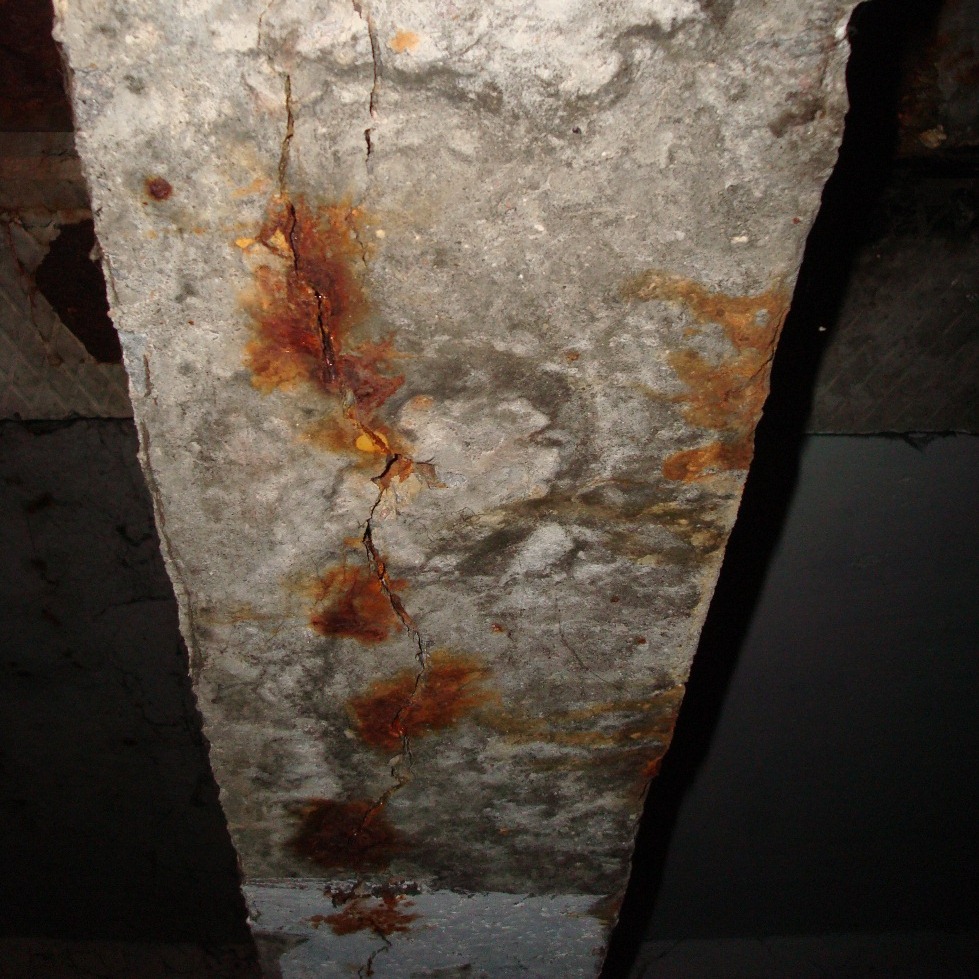
In order to timely identify the cracking and eliminate this defect before the occurrence of irreparable consequences, it is necessary to regularly inspect the concrete surfaces, fix the detected defects and make their embedding. Thus, you will have the opportunity to localize the cracking at the earliest possible stage and reduce the amount of repair work done.
Council. At all do not allow yourself to be lazy and postpone the closure for later, even if it is a matter of very small defects.
Finally

Cracks on the concrete surface, whether shrinkage cracks in concrete according to SNiP or cracks in foam concrete, is the first sign that something was done wrong during the construction process. And if you can not restore it already, then you should take care of it already at the stage of operation, by covering the defect immediately after its occurrence and not allowing the growth of the cracks and the increase in their number.
A video in this article will tell even more about how there are cracks and how to deal with them.
Cracks on the foundation after pouring concrete
A frequent phenomenon in the construction of their own hands or the forces of unskilled workers are cracks in the foundation after pouring. The reasons for their formation are numerous and it is quite difficult to independently establish a specific one of them. Below we will consider what causes the appearance of cracks in the concrete structure and how to deal with them.
In itself, the appearance of cracks in the ribbon foundation is not something catastrophic. Sometimes they appear as a result of natural shrinkage of soil under a monolithic construction. If the preliminary study of soils was carried out correctly and its results were taken into account in the design of the foundation, the net of shallow depressions will not lead to critical consequences.
On the contrary, if cracks on the foundation after pouring have uneven "torn" edges and the depth of the depressions exceeds 10 cm, in this case, urgent measures must be taken to save the situation. It is possible that it will be necessary to completely dismantle the concrete base and replace it with a new one, built in accordance with the building rules. Depending on the location and direction of the crack after the foundation is poured, it can be divided into the following types:

Variety of foundation cracks
- Horizontal - are directed parallel to the main working reinforcement in the foundation. Most often, they are the least problematic and repairable. The main reasons for their formation are shrinkage phenomena in the underlying soils or in the concrete itself.
- Vertical - perpendicular to the main reinforcing rods of the concrete structure. Dangerous enough if the size increases. Even without finding them, the owners of the house can face unpleasant changes in the linearity of the house's base in the form of jamming doors or windows in the apertures.
- The inclined cracks are located at some angle to the horizon line. They are the most dangerous in terms of maintaining the integrity of the foundation and the structure itself as a whole. As a rule, a combination of several factors leads to their formation.
The causes of cracks in the foundation
The appearance of cracks in the foundation of the house can occur for several different reasons, most often associated with a violation of the technology of manufacturing the base of the house or poorly conducted studies of the condition and type of soil in the place of construction. Below, we consider the main factors affecting the cracking of concrete.
- Incorrect calculation of the load-carrying capacity of the foundation or its excess due to the use of certain construction materials that are not taken into account can lead to the appearance of cracks, which it will be practically impossible to cope with. This happens for several reasons - the production of a basement foundation with reduced linear dimensions in order to save concrete, the use of plastic instead of steel reinforcement, having a low degree of longitudinal stretching, and also when using concrete of an inappropriate grade. An important role in the construction of the foundation is played by the quality of the main binder, cement. Exceeding the time of its storage, wetting and clumping directly in bags during long storage - all this can cause a decrease in the quality of concrete and, as a consequence, a decrease in its strength characteristics.
- The behavior of the soil on the site of installation of the house is also a frequent reason for the appearance of shrinkage cracks in the foundation. The rise in the groundwater level as a result of the excessive amount of precipitation that fell during the spring-autumn period may negatively affect the modes of soil swelling. Excess of calculated vibrations of the base also leads to the formation of cracks, which often self-destruct when the soil conditions return to normal. A similar effect can also have unstable temperature conditions in the winter. Frequent thaws, alternating with severe frosts - on the best conditions for the stability of the concrete foundation.
- Violation of the technology of foundation works can be expressed in the whole complex of various errors allowed by private developers or teams of unskilled workers. Among the most common are the following:
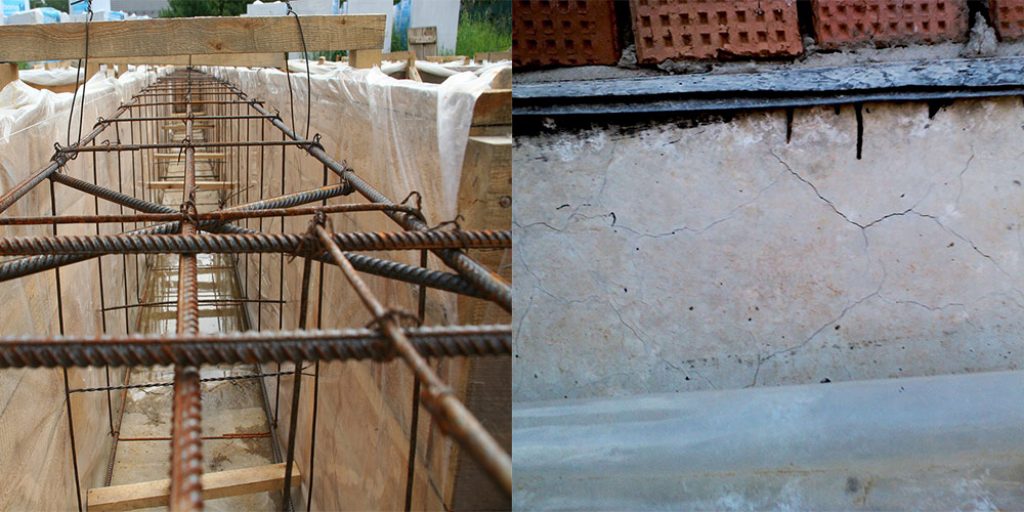
Causes of cracks in the foundation
- Use of steel reinforcement with multiple traces of corrosion, which can adversely affect the internal state of the concrete;
- Incorrect conjugation of the reinforcing belt at the corners of the foundation and at the junction with the partitions. It is not recommended to perform connection of reinforcement in these places by the end method. It is better to install cores and joints, pre-bent at an angle of 90 °.
- When pouring concrete from a mixer and the absence of a wooden or metal tray, often the mixture pours out in one corner of the ribbon foundation and is carried on stretchers or distributed by shovels. In this case, the consistency of the concrete and the ratio of the liquid and solid fractions are disturbed. Just as long interruptions are more critical when pouring the base of the house, for example, if there is insufficient amount of concrete. In the event of unforeseen interference in the operation, the gravel-sand-cement mixture may thicken. For economy, it is re-diluted with water, not respecting the required proportion, which leads to a significant decrease in the quality of concrete.
- The large influence on the occurrence of internal stresses in concrete is exerted by the speed of its curing from the outside and from the inside. The presence of frost, strong wind, rain or heat adversely affects the solidification of the mixture. It is for this purpose that the surface of the concrete pouring is necessary in the first few days to be covered with a wet sack or roofing material to adjust the drying speed.
Investigation and measurement of cracks
In the event that a few months or years after the foundation slab has been poured, cracks appear, do not panic. A thorough investigation of the problem should be conducted. First, determine the direction of the depressions, their length and depth. According to modern building codes, the allowed cracks in the foundation after pouring can have a width not exceeding 0.4 mm.
Even in case of detection of a grid of small depressions in the base of the house, it is not recommended to start repairing them instantly. Builders are advised to monitor the dynamics of the behavior of cracks. For this, a simple method is used. It consists in installing a beacon on the crack, which is a strip of thin paper or a small plaster small cake.
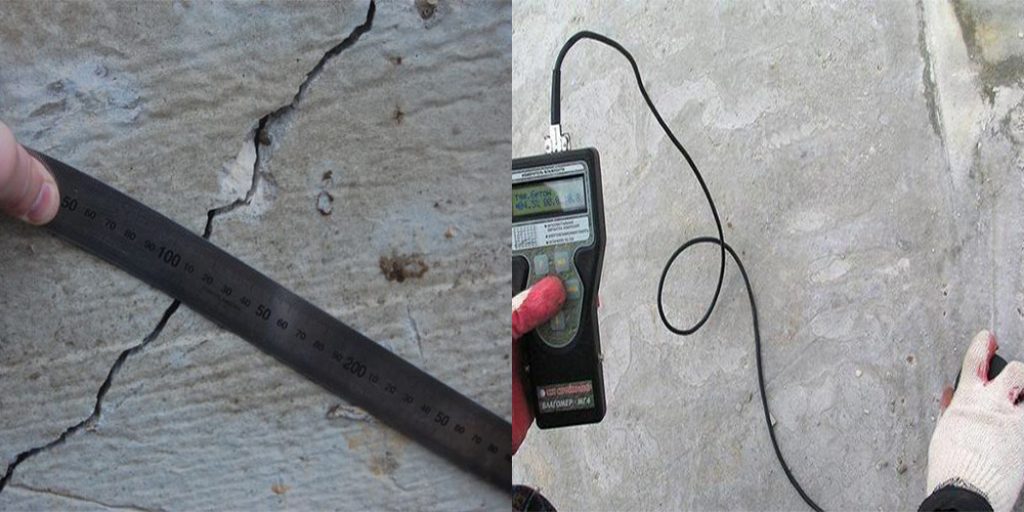
Investigation of foundation cracks
Before installing the lighthouse, the surface of the foundation around the crack should be carefully dust-free and cleaned of lagging concrete particles. For this, it is convenient to use a metal brush, a soft nylon fleece brush and a vacuum cleaner. After that, a strip of paper is smeared around the edges with a quality universal glue and is glued to the foundation along the edges of the groove. Do it better in the widest part of the cracks.
Observation of the state of the lighthouse should be carried out with a periodicity of 3-5 days. In case of crack expansion, the tape pasted into the tension will be peeled off from one of the sides or ruptured. This indicates the expansion of the deepening in the foundation and the need for immediate action. The gypsum beacon splits with crack growth, which is also a signal for immediate action.
Methods for eliminating foundation cracks
If cracks appeared on the surface after foundation pouring, and as a result of long and careful observations it was possible to establish that their growth is absent or insignificant, it is necessary to take measures to eliminate depressions. This must be done because of the negative impact on moisture of concrete in all its forms - dew and fog, rain, snow and ice.
Especially the harmful effect on the base of the house is provided by ice. From the school course of physics everyone is aware of a significant expansion of water during freezing. The moisture trapped in the crack will act on its walls, which will certainly lead to an expansion of the depression and the destruction of concrete up to critical scales.
Currently, there are several common and available ways to remove the allowable cracks in the foundation. The first of these refers to small depressions that appear an hour and a half after the mixture is poured. This, as a rule, is due to insufficient compaction of concrete. In the woes of the builders, the problem most often sounds like "flooded the foundation - cracks appeared".
If cracking of fresh concrete is observed, it must be repeatedly carefully compacted with a construction vibrator. The same procedure to avoid the occurrence of cracks is recommended to perform directly when pouring a tape or slab concrete base of the house.
If cracks are detected after pouring and hardening of the concrete mixture on the surface of the foundation, they can be controlled with a sand-cement mortar of finely dispersed composition. It is prepared before the beginning of work, put on the surface of the cracked base of the house and rubbed with a trowel or grater. A more reliable option is special repair compounds for foundations, realized as ready dry mixtures of complex composition.
More complicated and expensive methods that allow not only to get rid of cracks in the foundation, but also significantly increase its load-bearing capacity. We are talking about the so-called injection method and the manufacture of an additional concrete foundation under the existing one. The first option involves drilling sloping holes in the base and walls of the house and pumping in them special fastening solutions. At the second, typical for incorrectly calculated tape foundations, below it an additional base with a large depth and support area is mounted.
Classification of cracks in concrete
Causes
What and how to close
How to fix oneself
In concrete, cracks appear almost always, even in new structures, because the filling technology is not always observed, or an unconsolidated mixture is used. They also happen from the age, and although it may seem that there is no salvation, everything will crumble, you should not despair: you can still fix it. Cracks in concrete - the result of deformation from external loads or from the occurrence of internal stresses.
Classification of cracks in concrete
On the bend: perpendicular to the axis of the reinforcement, loaded by bending stretching. They start from the edge and end at the zero line.Cracks of shear appear in the region of the transverse force and result from the occurrence of stresses on the bend. They, as a rule, pass diagonally to the reinforcement axis.
Through-faults appear at the central extension and go through the cross section.
Violations in joints often occur in the area of anchoring the rods and run parallel to the armature. Occur in the corners of the tape-type foundation with incorrect anchoring or when poor-quality concrete is used, they lead to the layering of the protective layer of pouring. Typical causes of deformation of the support: punching, subsidence of soil, rise at saturation with water, etc.
Deformation from internal stress
This stress occurs when there is a temperature difference between the surface and inside the concrete mass. The reason is the rapid cooling of the surface from cold air, water, or by radiating a large amount of heat during the hydration of the cement. If the stresses exceed the strength of the material - surface cracks appear in the concrete. They go to the depth of a few cm. Among the causes of the appearance of cracks are the stresses from the sharp drying out of the outer layer from exposure to air temperature or sunlight with high air temperature.The norms for variable freezing-thawing allow the presence of shrinkage, surface technological cracks on the surface, however, their width should not exceed 0.1 mm (GOST 13015-2003). It is believed that surface cracks after casting in concrete are perpendicular to the axes of the reinforcement up to 0.4 mm, or up to 0.3 mm. But going along the reinforcement, do not lead to a critical decrease in longevity. It is necessary only to control the size of their disclosure, it is believed that these are cracks permissible in concrete, only it is necessary to repair them in time.
Causes
Since in concrete structures the tensile strength is small, then after drying, they shrink and give shrinkage cracks in the concrete. The reasons for their education are divided into three categories:1. Cracks affecting the strength of the structure ("Constructive"). They do not lead to an emergency condition of the structure. Constructive cracks are often caused by:
a) Design errors;
b) errors in the construction;
c) changes in conditions of maintenance with overloads of the structure in excess of design loads;
d) emergency situations, such as an explosion, an earthquake, etc.;
2. Cracks from fires. Can be constructive or non-constructive (structural). Stratification of the upper layer is always observed.
3. Non-structural cracks. Include reasons not included in paragraphs. 1 and 2. They are divided into several types:
a) From plastic shrinkage;
b) temperature-shrinkage cracks of concrete in the initial stage;
c) shrinkage during drying;
d) cracks due to corrosion of the reinforcement.
What and how to close
When repair work is usually used wet cement "dough", a binder solution, a mixture with a polyester or epoxy resin, as well as purchased repair mixes.Repair of cracks (up to 3 mm.) Is carried out by cement "test" or special mixture. Mixing proportions: 1 part Portland cement to 3 parts water and sand + PVA glue. Large caverns, and places with exfoliated concrete are closed using a sealant for cracks.
The most popular repair is injection. The essence of the method is that the work is carried out by "injecting" polymer materials into cavities without replacing the elements of the structure itself. Particularly applicable method for large volumes of work.
To repair vertical surfaces they are covered with a mixture consisting of a concrete solution with a polymer additive. For the addition, furyl alcohol (0.35% of the total mass) and 0.02% of sulfanol are suitable. On drying, the frozen mixture is additionally covered with a polyurethane sealant.
Repair can also be done by creating a layer of the same material on the surface. However, the application of this method is not always rational, because it is laborious and leads to an increase in the construction mass, increasing the load on the foundation.
How to fix oneself
In themselves, cracks in the foundation of concrete are the source for the subsequent destruction of the structure. To restore the monolith itself, you must first inspect the damage and determine the repair method.The seal should be started by brushing with detergent and water. Surplus water remove. Remove all the fragments with a metal brush. The surfaces to be repaired should be degreased (with acid-containing preparation). Minor cracks are cut with a spatula and are buried to 5 mm: this way the mortar fills the space more easily. We strengthen the deep ones: we cut the transverse grooves with the "Bulgarian".
If the reinforcement is seen in the depths, it must be cleaned and treated with an anticorrosive agent. In the cleared furrows lay pieces of wire with a diameter of 4 mm.
On the whole surface to be repaired with a brush, apply a primer, its thickness is 3 mm. After that, without waiting for the final drying, we apply a repair mixture.
